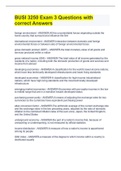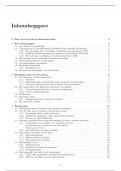Lecture notes
Endocrine & Reproductive Systems (63 pages)
- Module
- Year 2
- Institution
- University Of Bristol (UOB)
Complete set of notes for this element in the Bristol A100 Pre-clinical course. This is everything you need to know to achieve 90% marks. It is presented in a simple question, simple answer layout. If you have any questions or if anything doesn’t make sense, email me at mh14782@my.bristol.ac.uk....
[Show more]












